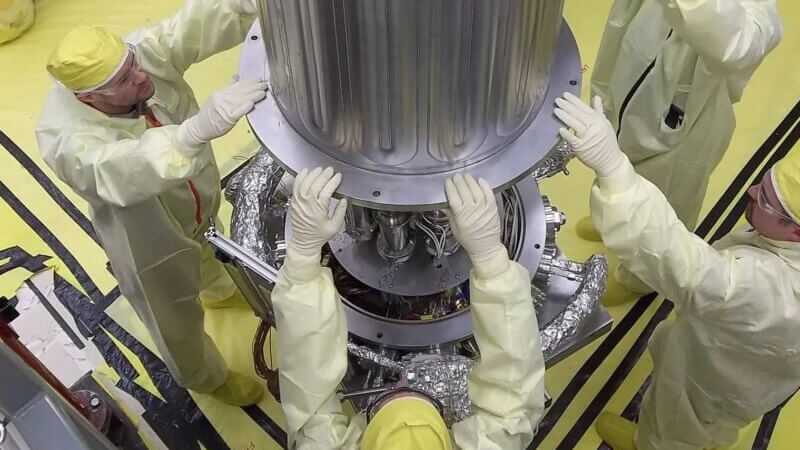
In addition to solar systems, nuclear power could also play a role in space in the future. NASA is even already thinking about a nuclear power plant on the moon. The backgrounds.
It seems as if humanity could colonize alien planets in the future. Many organizations are already planning a moon base to test the effects on possible colonies. NASA recently celebrated the arrival of the first U.S. lander on the moon in more than 50 years.
This should pave the way for a return of American astronauts to the lunar surface. The Odysseus lander, built by Intuitive Machines, touched the lunar surface on February 22, 2024. On Earth's satellite, day and night each last two weeks.
This poses some challenges. Because after the sun sets, a system based on solar energy like Odysseus no longer has the opportunity to generate energy. At the same time, temperatures drop to around minus 173 degrees Celsius.
Nuclear power in space: NASA loses spacecraft on dark days
Over two weeks, these low temperatures can damage sensitive space equipment or destroy a lander – even if it could generate power again by sunrise. Survival at night therefore requires heat and electricity. But what is the best way to generate this without solar energy?
According to NASA researchers, nuclear power in space could be an attractive solution. The space agency assumes that nuclear power plants could be used on the lunar surface. Jay Jenkins, program director of NASA's Commercial Lunar Payload Services (CLPS), even sees an early deployment as realistic.
The first power plant could be on the moon in just five years. Because the CLPS Intuitive Machines mission ended when it was clear that Odysseus did not survive the first night. A restart and further attempts to contact failed.
Researchers want to investigate water resources
This brought an abrupt end to a $118 million contract with NASA to deliver science and technology demonstration payloads to the lunar surface. Therefore, an alternative solution is needed to complement the solar panels already in use. To achieve its long-term goals, NASA needs more than one lunar day.
The space agency wants to establish a sustainable presence on the lunar surface and advance exploration of permanently shadowed craters at the moon's south pole. These craters may contain water. The use of nuclear power could pave a way to install already available technologies in space.
Also interesting:
Source: https://www.basicthinking.de/blog/2024/04/10/kernenergie-im-weltraum-nasa/


